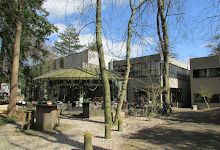Archive number: 21
Title: Answers? Questions! Questions? Answers!
Main Album: Focus 3
Track number: 6
Genre: Progressive Jazz Rock Instrumental
Studio: Olympic Studios 'B', 117 Church Road, Barnes, London SW13 9HL
Length: 13' 50"
Composer: Bert Ruiter, Jan Akkerman
Musicians: Jan Akkerman – Electric guitars (Gibson Les Paul Customs?); Thijs van Leer – Hammond organ, Flute; Bert Ruiter - Bass; Pierre van der Linden – Drums (brushes and sticks)
Producer: Mike Vernon
Engineer: George Chkiantz
Label: LP – Imperial, Polydor, Sire CD – EMI-Bovema, IRS, Red Bullet
Date of recording/release: July 1972/November 1972 CD - 1988, 1993, 2001
Alternative version: A live version can be heard on the Rainbow album. Akkerman has played it live.
Notes: Jan Akkerman apparently had a sound stage built in the studio for Focus 3 and once again here is a track that chiefly has a very live sound, though there are some overdubs. The song was being played by Focus from Ruiter's arrival and he gets a credit. The idea of musical calls and responses is a common one in jazz and it forms the basis of much of the Focus repertoire. Here, slightly differently, the response or answer precedes the call or question. The opening section (00:00-01:21) begins with Ruiter's bass riff, which gives the track its initial impetus. Bass and guitar play in unison backed by snare, cymbals and a struck high hat. From 00:19 a swelling Hammond vibrato pans out across the sound spectrum. At 00:37 the guitar cuts in to form a bridge to the point where the Hammond takes up the lead (00:47) until replaced again by a jazzy guitar (01:21). The section is brought to a close by four decisive chords. This first section is then partly repeated but with no lead organ and a longer guitar-led section that ends again with the decisive chords plus a thrice-repeated riff or scale and a repeated drum beat (01:22-02:51). A short third section (02:52-03:58) is led first by the guitar, now in plaintive mood and dubbed over the existing track which also features guitar, and then (from 03:27) by the organ. At 03:59 a sombre and mysterious mood is introduced and we come to a lengthy flute-led section (03:59-08:06). Again there is evidence of some overdubbing to achieve this. The guitar provides a subtle undercurrent until (around 06:59) it becomes a little harder and more insistent and the atmosphere becomes less mysterious and more heavy. By 08:07 we are into a new guitar-led section that is increasingly heavy and ever wilder, with Akkerman moving up and down the fretboard with some dexterity. This lasts until around 11:25 where there is an unexpected change in the style. A final section (11:27-13:50) is then led by a weeping or 'violined' guitar. This slower section ends with a virtually solo but multi-tracked guitar riff that breaks down at the end, the one guitar letting out a final long-drawn-out note that employs feedback to sustain itself for over 20 seconds. The influence of Django Reinhardt has been observed with regard to this piece but certainly Jimi Hendrix has also had a strong influence on the guitar work too. On the original vinyl LP 5 seconds of manic laughter can be heard in the distant background after this, at the close of the second side of the album. On the CD version this is now attached to the beginning of the track that follows (Elspeth of Nottingham).





















No comments:
Post a Comment